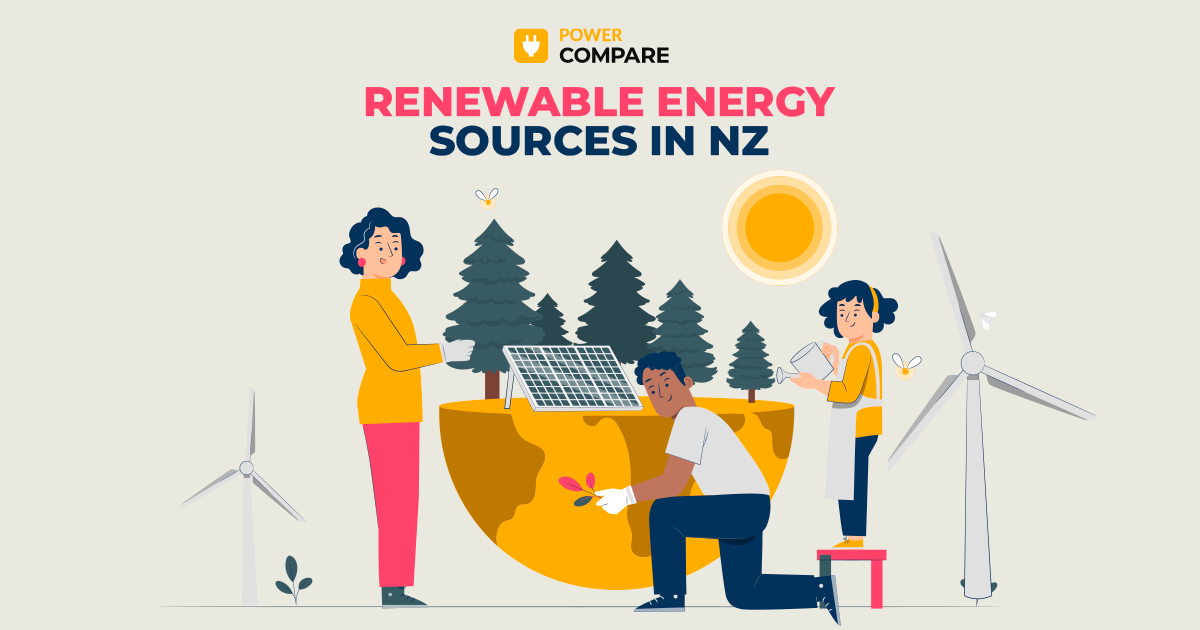Minimise your impact on the planet and your wallet by lowering your power consumption!
In New Zealand, we get our electricity from a combination of both renewable and non-renewable sources. Renewable energy sources are defined as sources that are constantly replenished by the earth’s resources.
What are types of renewable in New Zealand? We have, generally, four types of renewable energy: solar, wind, geothermal, and hydro power. Let’s break down how each type of energy source works, and how they generate electricity.
Solar Power
Solar power harnesses the power of the sun through solar panels, and converts the energy into electricity using a photovoltaic process. This process works by converting light into an electric current. Solar panels can generate enough electricity to cover half of your power bill, or even the entire month’s bill. It can often even generate too much electricity for your needs. Many energy retailers offer buy-back rates, in which they pay you a rate per kWh to buy that electricity back to the grid. Solar panels can be pricey to get installed (typically on your roof), but they have a long life span, usually 20 to 30 years. They are a great investment, saving you money on your power bill in the long run.
Wind Energy
Humanity has been harnessing the power of the wind for thousands of years. It’s been used to grind grain and push water! Scientists harness the kinetic energy of the wind to generate electricity, by having the wind spine turbines. When the wind pushes through the turbine, the blades spin, and they make a rotor in the turbine spin as well, which generates electricity. This electricity is typically sent to a grid, where it will then be dispersed to homes around the country. Luckily, in New Zealand, we have no shortage of wind, so this is a great source of energy.
Hydro Power
Hydro power harnesses the kinetic energy of moving water. Similarly to wind power, hydro power uses the flow of water to push turbines. This source of energy begins its journey in a water reservoir. There are typically valves or gates that control the flow of the water. As the water flows downstream, it picks up speed before it falls over the dam. As it spills over the dam, it pushes through turbines, which generate kinetic energy that we then convert to electricity.
Geothermal Energy
Geothermal energy comes from the heat within the earth’s crust. Deep within the earth’s crust, there is the hottest part of the planet. It can get up to 5,000 degrees Celsius! This heat constantly rises towards the Earth’s crust, and heats up the rock formations underground, turning it into red-hot magma. The heat from the magma also rises to the surface of the earth, coming out in bursts of heat and steam. In New Zealand, we have a lot of geothermal activity – it’s why we are lucky enough to have geysers, hot springs and mud pools!
Engineers harvest the energy of this heat to convert it into electricity. They do so by piping the steam and hot air through turbines, spinning the blades to generate electricity.
Save Money on Power by Comparing
Now that you know where power comes from in New Zealand, why not jump on Power Compare to find a better deal on your electricity bill, and make savings? It’s especially important since power providers are increasing power prices! By taking just a few minutes to compare plans side-by-side with our user-friendly platform, you can find a plan that offers more value for money, and helps you unlock savings that will actually make a difference to your budget.
Reduce Power Consumption to Save Money and the Environment
While a lot of our electricity comes from clean, renewable sources, we still have a small portion of power that comes from fossil fuels. Fossil fuels are considered a dirty source of energy as they release carbon dioxide into the atmosphere when burned to generate electricity. You can reduce your impact on the environment by lowering your power consumption. It’s also a great way to save money. Click the button below for 8 ways you can save power, and save money!



